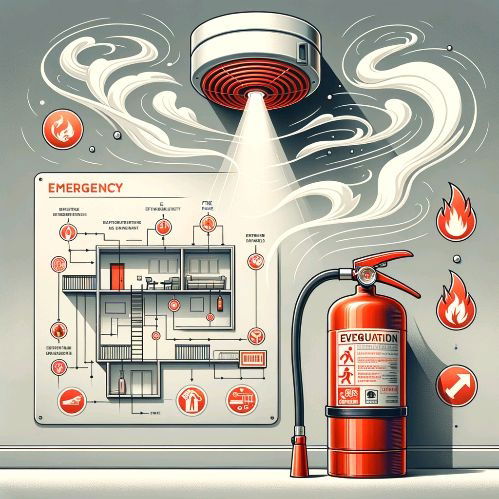Introduction
Fire and safety are critical components of risk management in any environment, whether it’s at home, in the workplace, or in public spaces. Awareness and preparedness can significantly reduce the risks associated with fire hazards, potentially saving lives and minimizing property damage. This informational piece explores the key elements of fire safety, including prevention techniques, the importance of safety equipment, and how to react in case of a fire emergency.
The Pillars of Fire Prevention
Preventing fires from occurring is the cornerstone of fire safety. Key prevention strategies include:
- Regular Maintenance and Inspection: Ensuring that electrical systems, heating devices, and gas connections are regularly checked and maintained.
- Safe Storage of Flammable Materials: Properly storing flammable substances away from ignition sources.
- Smoke Alarms: Installing smoke alarms on every floor of your home or workplace and testing them monthly.
- Fire Escape Plans: Developing and practicing a fire escape plan with all household members or employees.

Essential Fire Safety Equipment
Equipping your home or workplace with the right fire safety equipment can make a significant difference in an emergency. Essential items include:
- Smoke Detectors: To alert occupants of smoke and potential fire.
- Fire Extinguishers: Strategically placed for quick response to different types of fires.
- Fire Blankets: Useful for smothering small fires or wrapping around a person whose clothing has caught fire.
- Sprinkler Systems: Especially critical in commercial and industrial settings for automatic fire suppression.
Educating on Fire Safety Practices
Education is a powerful tool in fire and safety. Knowledge on how to use fire extinguishers, understanding the different types of fires, and knowing basic first aid for burns are all vital. Regular fire drills and safety training sessions can ensure that everyone knows how to act in case of a fire.
Responding to Fire Emergencies
Knowing how to respond when a fire occurs is as important as prevention. Key response steps include:
- Evacuation: Follow your fire escape plan calmly and quickly.
- Calling Emergency Services: Call the fire department as soon as you are in a safe location.
- Staying Low: Smoke rises, so stay close to the ground while evacuating to avoid inhalation.
- Never Re-entering a Burning Building: No object is worth risking your life.
Conclusion: Fanning the Flames of Fire & Safety Knowledge
Fire and safety awareness is indispensable in creating a secure environment. By focusing on prevention, equipping yourself with the necessary safety tools, educating those around you, and knowing how to respond in emergencies, you can protect both lives and property from the devastating effects of fire. Remember, the key to fire safety lies in preparedness and knowledge, empowering individuals to act confidently and effectively to mitigate fire hazards.

Leave a Reply